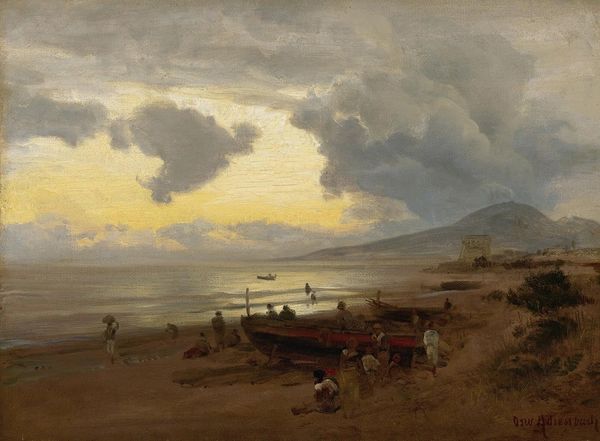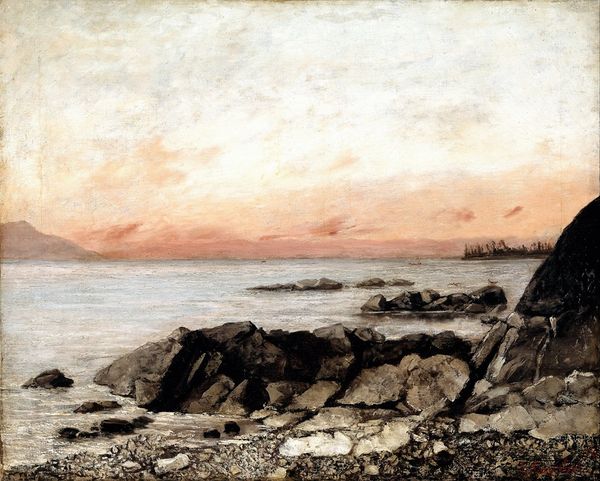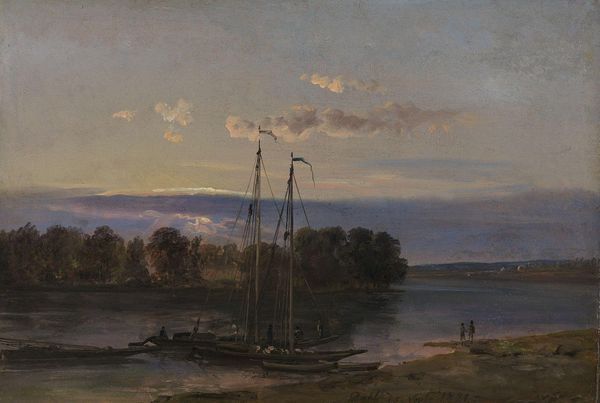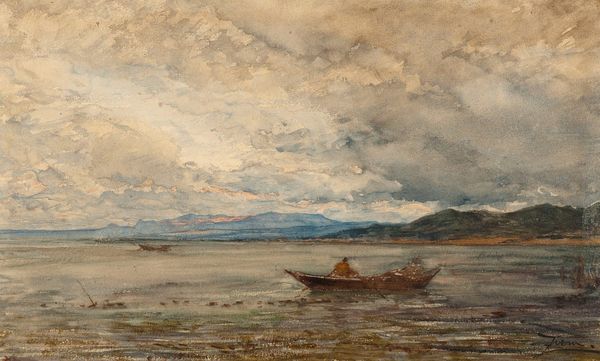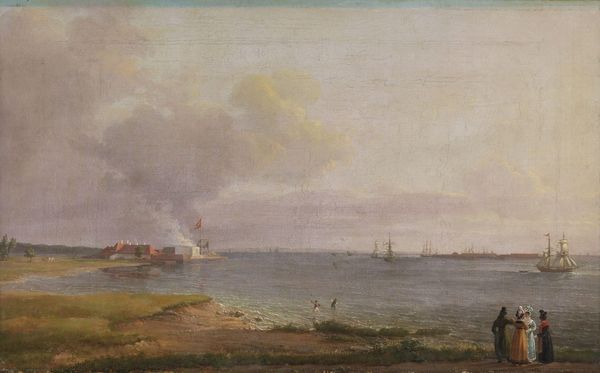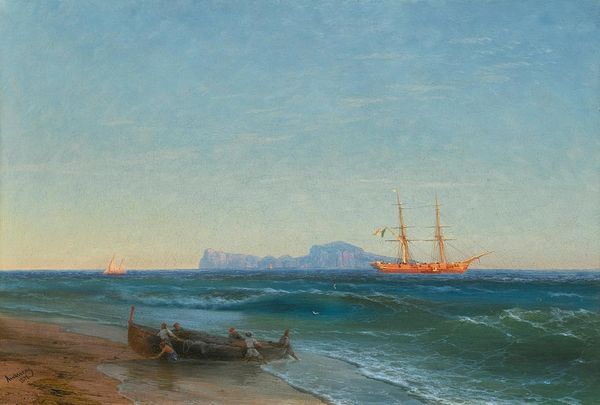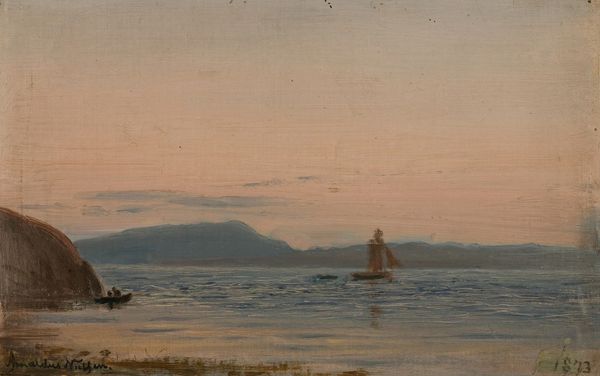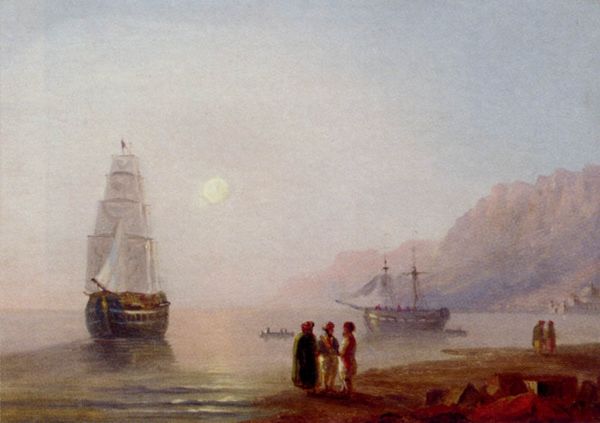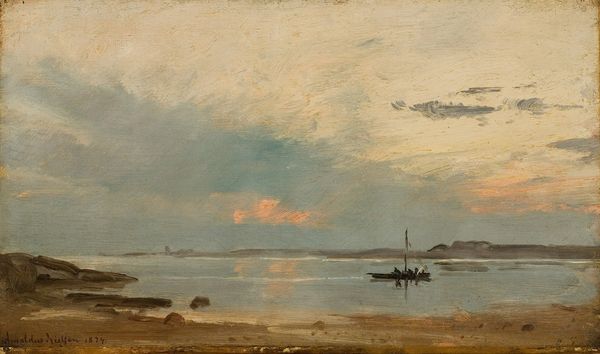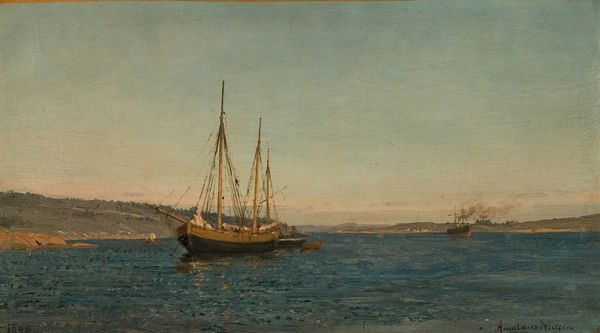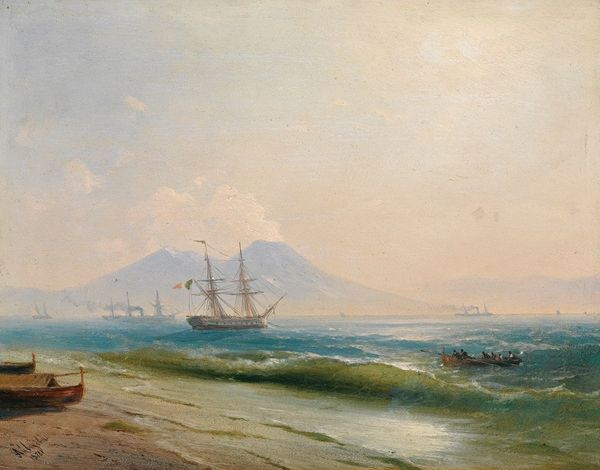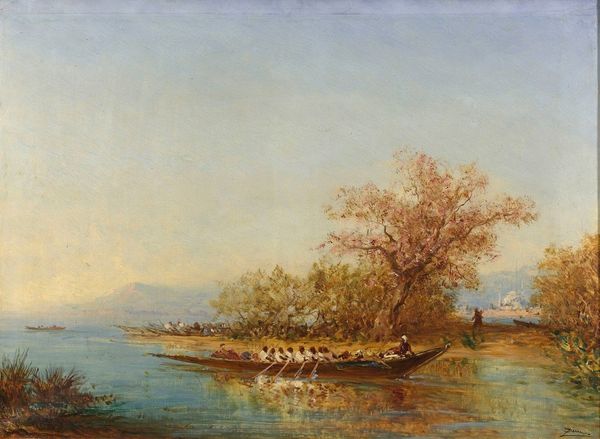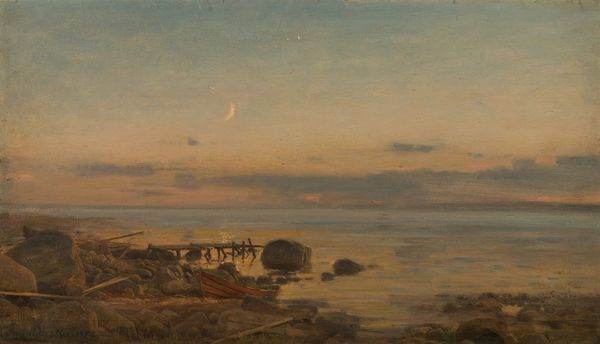
oil-paint
#
baroque
#
impressionism
#
oil-paint
#
landscape
#
impressionist landscape
#
oil painting
#
orientalism
#
cityscape
Copyright: Public Domain: Artvee
Editor: Here we have "On the Bosphorus" by Félix Ziem, done with oil paints. I’m really struck by how the light seems to dissolve everything into a dreamy haze. What do you see in this piece from a formal perspective? Curator: The composition pivots on a contrast between the foreground and the distant cityscape. The horizontal division creates a sense of depth, wouldn’t you agree? Observe the impasto strokes of the grasses in the foreground juxtaposed against the smoothed application of paint indicating distance. Editor: Yes, I notice that difference. The rough texture up front pulls you in, and then your eye just glides over the city. But what does that contrast signify? Is Ziem trying to tell us something by manipulating texture in this way? Curator: Texture establishes hierarchies and spatial relations, that is correct. Here, texture is integral. How do you see it shaping meaning and guiding your visual journey? The visible brushstrokes contribute significantly. Editor: I see what you mean. The visible strokes in the foreground act like anchors, while the blurred city becomes this almost unattainable, dreamlike space. And the light...it's not realistic; it's an emotional light, wouldn't you say? Curator: Precisely! This elevation of light is another carefully selected element that reinforces thematic construction within the painting's formal parameters. The artist isn’t copying what’s in front of him; he's choosing. He’s arranging formal devices to achieve something. Editor: That makes me think about how the 'Orientalist' label applies here too. It’s not a factual depiction of Istanbul but an arrangement, as you say. Curator: Correct. We see that Ziem uses a calculated manipulation of color and texture as a construction within Orientalist aesthetic. It is the materiality and arrangement of formal elements that delivers impact. Editor: It's fascinating to think about how those formal decisions shaped its reception at the time, and even how we see it today. I appreciate you pointing that out! Curator: And I trust the process of looking will guide our subsequent discussions.
Comments
No comments
Be the first to comment and join the conversation on the ultimate creative platform.
